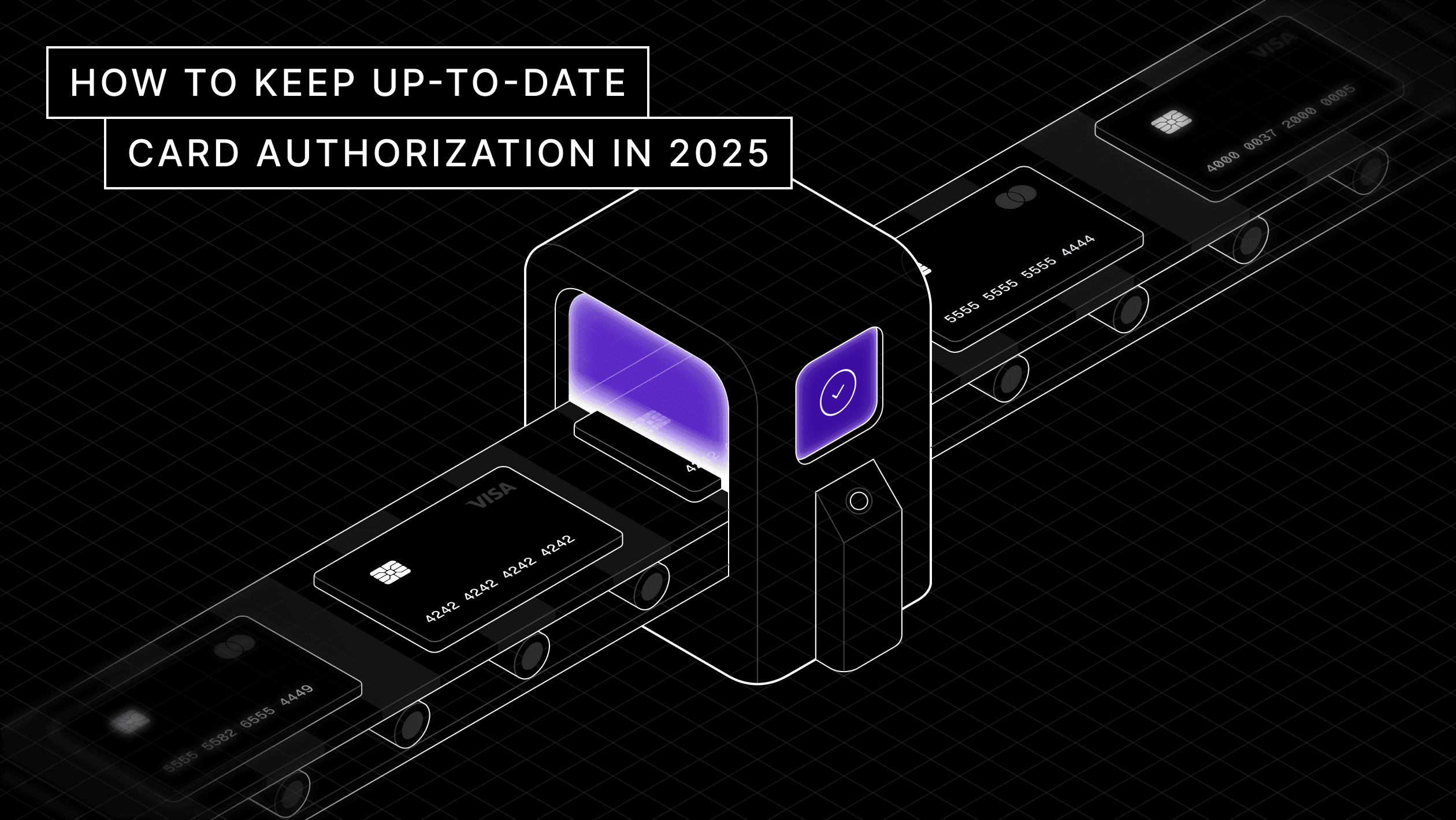Evaluating network tokens: Webinar Q&A
Network tokenization promises better authorization rates, reduced fraud, and enhanced security, but implementing it comes with real questions.


Effectively managing card authorization is critical for businesses that rely on recurring or installment-based payments. Outdated card information can lead to failed transactions, lost revenue, and customer dissatisfaction.
With the right tools and strategies, vendors can proactively maintain accurate payment information, ensuring seamless operations and consistent customer experiences. This article covers key strategies to keep card authorization up to date, including card automated update services and tokenization.
Card authorization is the process of verifying payment details during a transaction to ensure that the cardholder has sufficient funds or credit. It’s a fundamental aspect of payment processing, particularly for businesses operating on recurring payment models like subscriptions or installment plans.
Key players include:
Keeping card authorizations up to date ensures that these transactions proceed smoothly. Unfortunately, card expirations, reissues, account closures, and customer data changes can make maintaining authorizations tricky.
Maintaining current card details is essential for businesses to avoid failed transactions. Payment disruptions can result in more than just lost revenue—they can erode customer trust and lead to churn.
Business impacts:
Security and compliance considerations:
One of the most effective ways to manage card updates is through card account updaters (CAUs). Major credit card networks offer CAUs to streamline the process of updating payment information without requiring significant involvement from customers or vendors.
CAUs automatically retrieve updated card details when changes occur, such as a card expiration, reissue, or upgrade. The process involves communication between the vendor’s payment processor, the credit card network, and the issuing bank—all governed by stringent security protocols like PCI DSS.
CAUs involve three distinct steps:
There are some distinct benefits to CAUs in the context of maintaining card authorization rates.
Fewer declined transactions
By proactively updating card details, CAUs reduce payment failures and stabilize revenue streams. For example, Postmates saw a 1.72% revenue uplift by implementing CAUs, resulting in $60 million in additional revenue over a year.
Continuity of service
Recurring payment businesses, like subscription services, avoid disruptions that could negatively impact customer satisfaction.
Reduced manual workload
Automating updates frees staff to focus on higher-value tasks while cutting administrative costs.
Enhanced security
By removing manual intervention, CAUs reduce the risk of data breaches and ensure compliance with PCI DSS standards.
While CAUs are powerful, they come with challenges like integration costs and varying processes across card networks. Vendors must weigh these factors when deciding to implement them.
While CAUs are invaluable, they don’t eliminate the need for proactive customer engagement. Vendors should adopt customer-friendly approaches to ensure payment information stays accurate.
Notify customers in advance about expiring cards and provide clear instructions for updating details. Automated reminders through email or text messages can streamline this process.
Offer secure, intuitive tools for customers to update their payment details. For example, a self-service portal with two-factor authentication can enhance both convenience and security.
Reassure customers that their financial information is handled securely. Provide details about encryption protocols, compliance with PCI DSS, and how updates minimize payment disruptions.
In addition to CAUs and customer-focused strategies, leveraging modern payment technologies can further optimize card authorization.
Tokenization replaces sensitive card details with a unique, encrypted identifier—or “token.” This token is used for transactions, ensuring the actual card data remains secure.
Machine learning can identify at-risk transactions, such as those associated with expiring cards. Predictive systems can prioritize updates for high-value accounts or recurring customers, ensuring uninterrupted revenue.
Unified platforms that combine CAUs, tokenization, and analytics offer a comprehensive solution for managing card authorization. Regularly auditing and updating these systems ensures compliance with evolving regulations.
By adopting these strategies, vendors can unlock significant operational benefits, including:
Fewer declined transactions result in more consistent revenue and accurate financial forecasting.
Seamless billing processes enhance customer trust and reduce churn.
Automated systems cut down on chargebacks, manual data entry, and customer service inquiries.
Advanced technologies like tokenization bolster security and protect sensitive information.
Efficient systems accommodate growing transaction volumes without increasing operational complexity.
Up-to-date card authorization is vital for modern businesses, especially those relying on recurring payments. By leveraging automated tools like CAUs, engaging customers proactively, and adopting advanced technologies like tokenization, vendors can minimize payment failures, reduce churn, and secure their revenue streams.
In an increasingly competitive market, these strategies are essential for maintaining customer trust and scaling operations effectively.